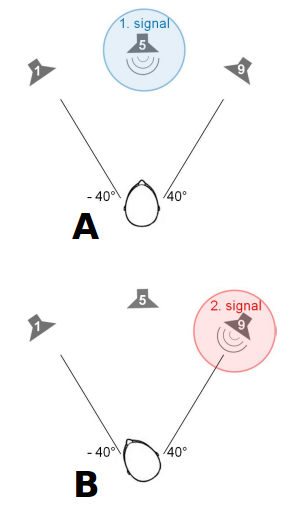Project B-T3 - Proprioceptive stabilization of the auditory world

Motion in space changes our sensory inputs even when, in world coordinates, the stimulus source does not move. For example, spatial auditory cues, like interaural time- and level differences, are changed by self-motion. It is likely that proprioceptive information about head motion and head-on-truck position plays an important role in auditory stabilisation. By proprioceptive information we mean efference copies of neck-muscle commands and passive sensation of head-on-trunk position. The current project aims to characterize proprioceptive contributions to auditory stabilisation in human behavior.
Objectives and description of work
Psychophyscial experiments will investigate the relative contribution, or weight, given to vestibular and proprioceptive signals during auditory stabilisation. Subjects will judge the relative position of two auditory tones, one presented before the head move (A), and one after (B). Performance will be compared across several conditions in which the sensory signals available for stabilisation will be systematically varied. For example, during passive head motion only vestibular signals are available, while during active head motion both vestibular and proprioceptive signals can be used. Comparing performance across conditions will reveal the contribution of proprioceptive signals.

